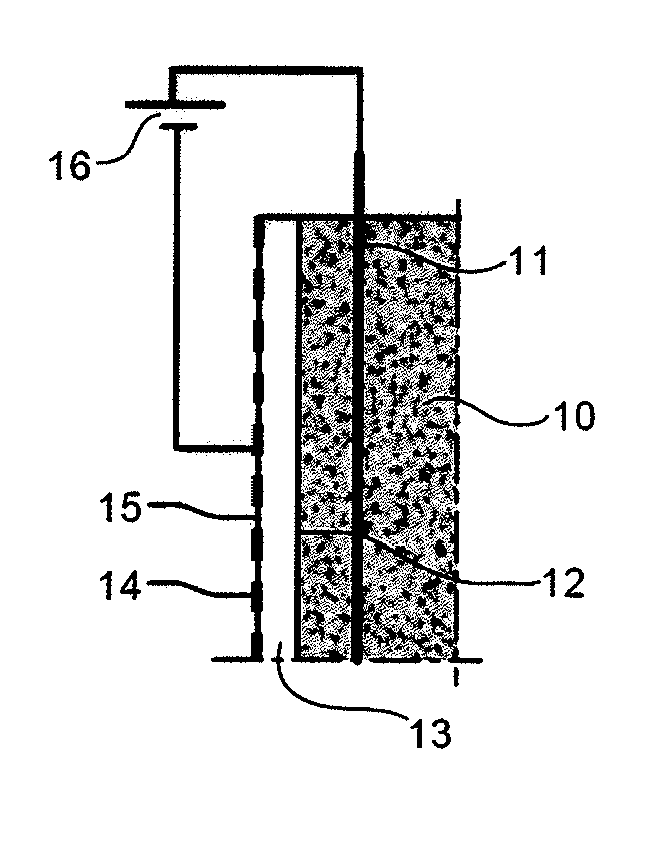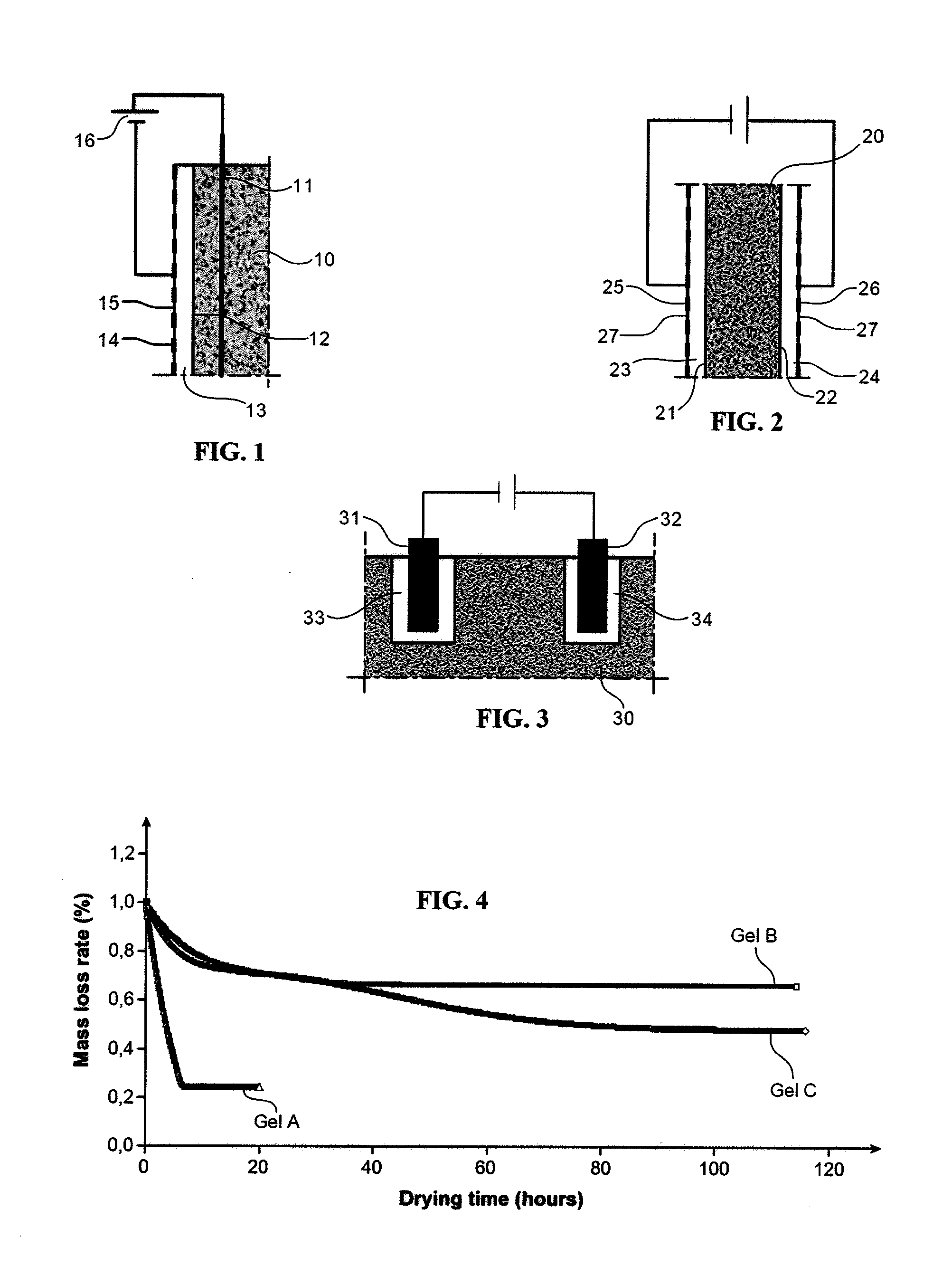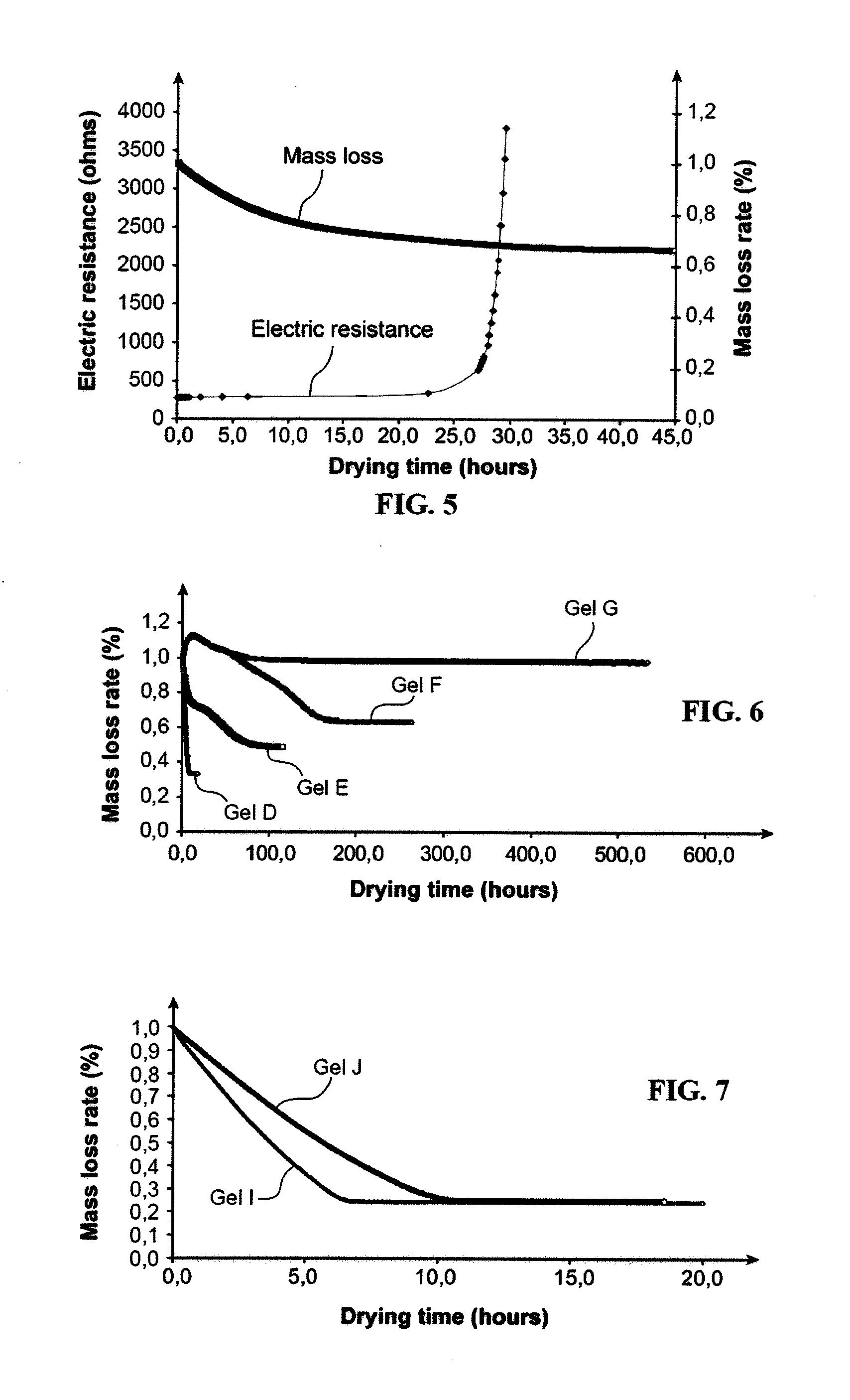Method for electrokinetic decontamination of a porous solid medium
a porous solid medium and electrokinetic technology, applied in the direction of electrolytic processes, electrical equipment, electrical machining apparatus, etc., can solve the problems of inability to transpose the methods described above to the decontamination of materials with cement matrix, incompatible with the system for processing nuclear waste for which the concentration threshold of organic materials is extremely low, and ineffective decontamination surface treatmen
- Summary
- Abstract
- Description
- Claims
- Application Information
AI Technical Summary
Benefits of technology
Problems solved by technology
Method used
Image
Examples
example 1
[0104]This example deals with the influence of a certain number of parameters on the drying kinetics of the gel used as an electrolyte in the method of the invention.
[0105]Influence of the Presence of Soda or Potash in the Aqueous Phase of the Gel:
[0106]FIG. 4 illustrates in the form of curves, the drying kinetics (i.e., the mass loss rates versus the drying time) of three gels designated hereafter as gels A, B and C and respectively comprising:[0107]Gel A: 23.7% by mass of Aeroxil® Alu C alumina and 76.3% by mass of water;[0108]Gel B: 23.7% by mass of Aeroxil® Alu C alumina and 76.3% by mass of a 5M KOH solution;[0109]Gel C: 23.7% by mass of Aeroxil® Alu C alumina and 76.3% by mass of a 5M NaOH solution.
[0110]These drying kinetics were obtained for gel layers with a thickness of 2 mm, at 22° C. and at 60% relative humidity.
[0111]As shown by this figure, the drying rate of a gel is considerably reduced by the presence of soda or potash in the aqueous phase of this gel.
[0112]Indeed, ...
example 2
[0138]A test for decontaminating a cesium-contaminated mortar was conducted:[0139]by extracting the cesium from the mortar according to the embodiment illustrated in FIG. 1, with[0140]a gel comprising 23.5% by mass of Aeroxil® Alu C alumina and 76.3% by mass of a 5M NaOH solution, and[0141]the following parameters: deposition of the gel in a layer with a thickness of 0.5 cm; application to the electrodes of an electric current density of 2 A / m2 of internal frame; temperature of 22° C.; 60% relative hygrometry.
[0142]The extraction was conducted for 260 hours. Gel samples were taken at different moments of this extraction, and then subject to natural drying under ambient laboratory conditions and their cesium and aluminium contents were determined.
[0143]FIG. 9 shows the time-dependent change of the ratio of the cesium content to the aluminium content of the dry gel versus the duration of the extraction of cesium.
PUM
| Property | Measurement | Unit |
|---|---|---|
| Fraction | aaaaa | aaaaa |
| Fraction | aaaaa | aaaaa |
| Percent by mass | aaaaa | aaaaa |
Abstract
Description
Claims
Application Information
 Login to View More
Login to View More - R&D
- Intellectual Property
- Life Sciences
- Materials
- Tech Scout
- Unparalleled Data Quality
- Higher Quality Content
- 60% Fewer Hallucinations
Browse by: Latest US Patents, China's latest patents, Technical Efficacy Thesaurus, Application Domain, Technology Topic, Popular Technical Reports.
© 2025 PatSnap. All rights reserved.Legal|Privacy policy|Modern Slavery Act Transparency Statement|Sitemap|About US| Contact US: help@patsnap.com



